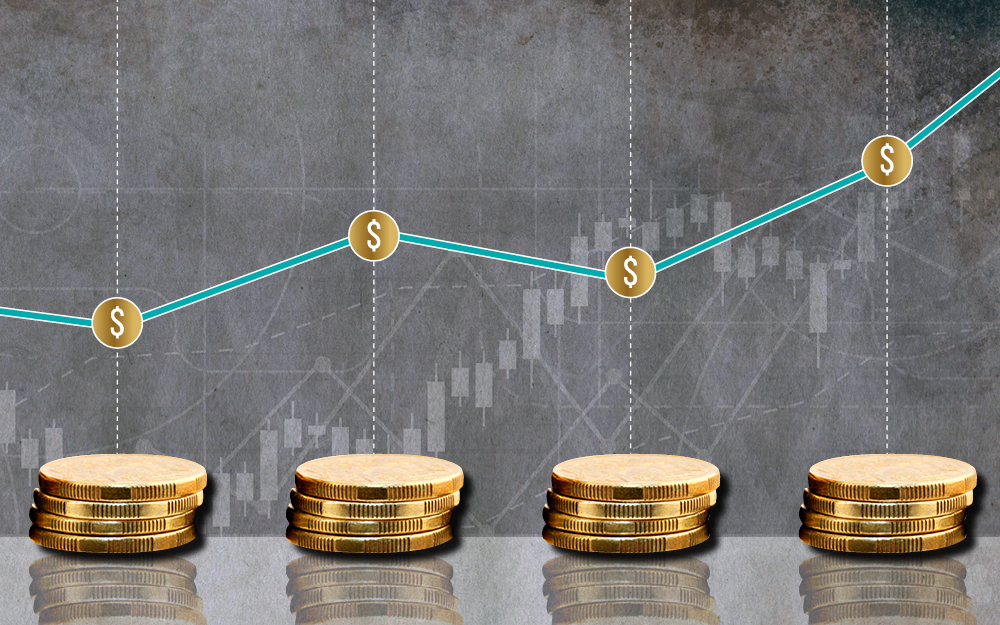Australian share prices have seen record highs in 2024 after a sluggish couple of years.
The S&P ASX200 index added just under 7 per cent in the 10 months to October 31 closing at 8160.i It reached its previous all-time high of 8355 just two weeks before.
So, if you were invested in an index fund or a basket of shares mirroring the ASX200 for the entire period, it’s likely you would have added some value to your portfolio.
Over the course of the year, the index has ebbed and flowed, recording several all-time highs and some jarring notes in response to global events.
Geopolitical tensions have also played a part in market skittishness as the wars in the Middle East and Ukraine continue and economists argue about the future impact on Australia of a Trump presidency.
US share prices surged the day after Donald Trump’s election in what many saw as a positive reaction to the returning President’s policies. Since then, prices have declined in a not-unexpected correction. Various analysts are predicting future volatility as markets respond to the proposed policies including tariffs and mass deportations promised by the President-elect.
These ups and downs in prices can have investors scurrying to hit the ‘buy’ or ‘sell’ buttons. They may be desperate to save further losses when share prices are falling rapidly or wanting to cash in on a rising market. Meanwhile, those with lump sums to invest may delay, trying to pick the time when prices are lowest.
Timing the market
It’s a strategy – known as timing the market – that may work for some, particularly if you need access to your investment in the short term. But, for mid- to long-term investors, it’s generally accepted to be problematic.
To begin with, predicting the next market movement is extremely difficult – even for experienced investors – because of the endless factors that can influence the markets.
Reacting to major market movements by selling or keeping a lump sum in cash until ‘the time is right’ means you run the risk of missing the market’s best days and reducing your overall return.
Countless studies show that better long-term results are achieved by consistent investing over time.
In Australia, $10,000 invested in the ASX/S&P 200 during the 20 years to October 2024 would have increased to $60,777. ii But, if you had missed the 10 best days during that time, your total investment would be just $36,014.
Dollar cost averaging
One way of removing the emotion and guesswork is to consider investing at regular intervals over time, ignoring any market signals, in a strategy known as ‘dollar cost averaging’.
The strategy works best if you are investing over the medium to long term because it helps to smooth out the price peaks and troughs.
In fact, compulsory superannuation paid by employers is a form of dollar cost averaging. Smaller, regular amounts are invested automatically, regardless of market movements and, over time, the investment grows.
However, the jury is out on whether dollar cost averaging is a useful strategy when you have a lump sum in cash to invest.
Some advocates of dollar cost averaging argue that there’s a better return because you reduce the risk of making a large investment just before markets plunge.
Those opposed to the strategy for lump sum investing say that, with a lump sum sitting in a bank account as you chip away at regular stock purchases, there is a risk that you will miss the best of the market.
A 2023 study found that investing a lump sum in the markets at once over the long term delivers a better return than a dollar cost averaging strategy.iii
So, avoid the risks of timing the market and consider whether dollar cost averaging might be an appropriate strategy for you.
We’d be happy to discuss how best to ensure your regular investing strategy or investment of a lump sum, takes account of future market movements and volatility.
i Australia Stock Market Index | Trading Economics
ii Timing the market | Fidelity Australia
iii Lump-sum investing versus cost averaging: Which is better? | Vanguard




